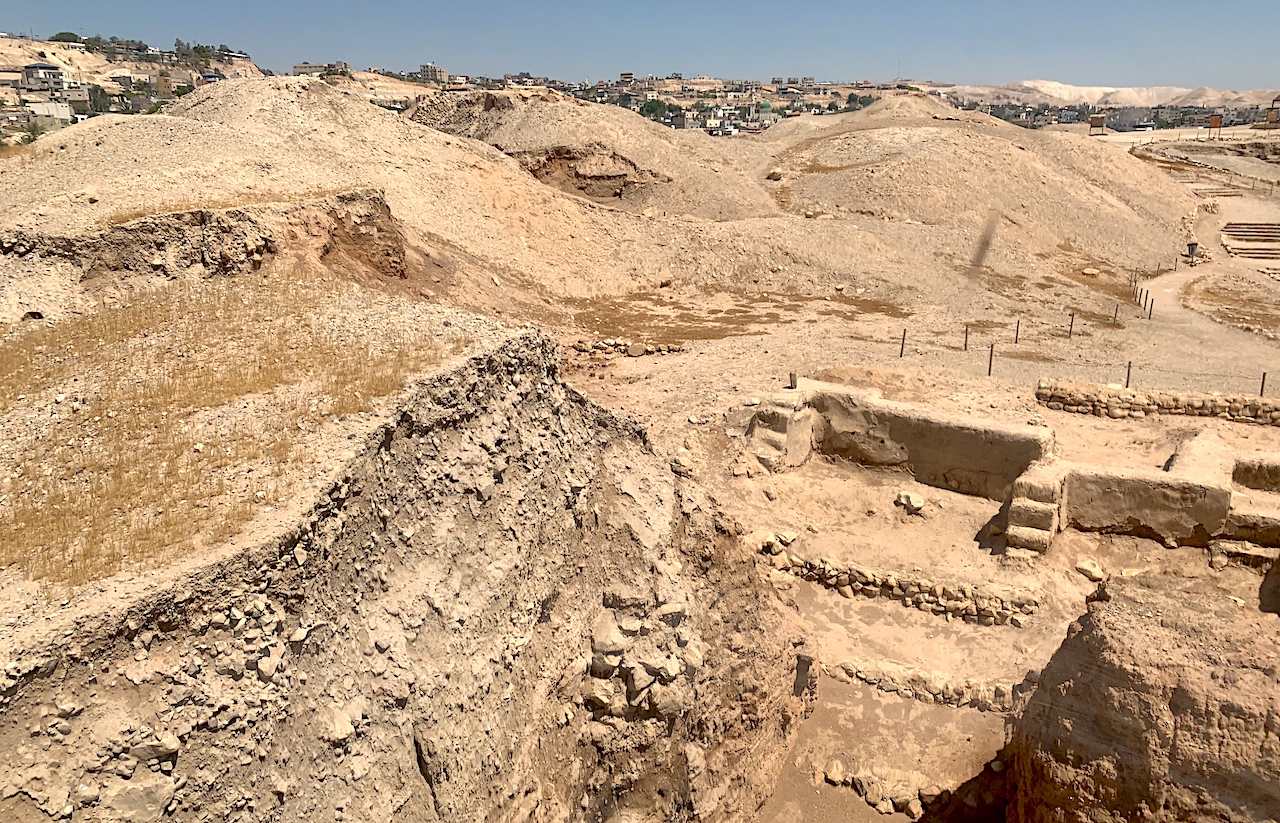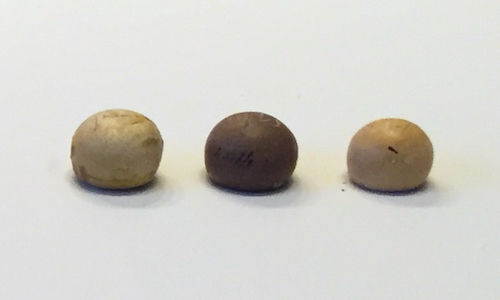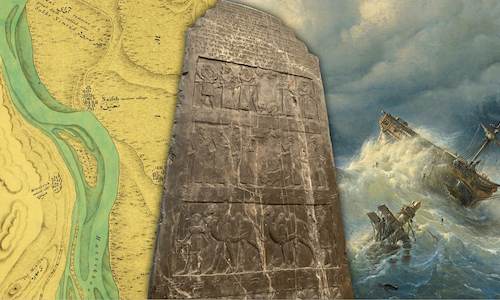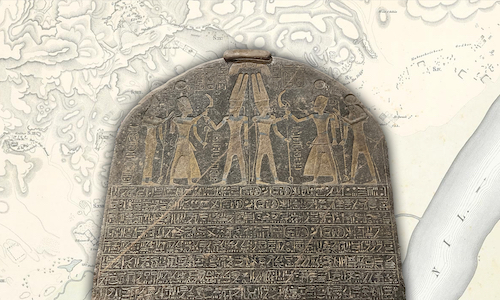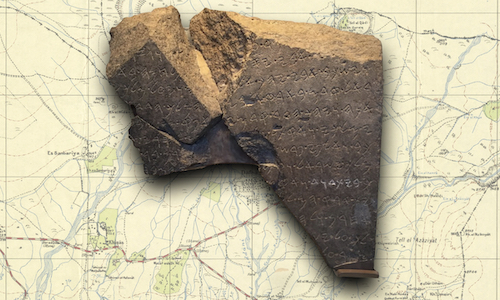Joshua 10 and 11: The Problem
Joshua 10 and 11 contain the accounts of the Southern and Northern campaigns describing the conquest of Canaan. Though they make for exciting reading, these chapters present the careful reader with a number of problems.
Before we get into the difficulties let’s remind ourselves of how Canaan was supposed to have been taken.
The Southern Campaign of Joshua 10 that began as a battle defending the Gibeonites from the southern coalition resulted in the Israelites taking all of southern Canaan. Here’s a map that gives the general idea of what was supposed to have happened:
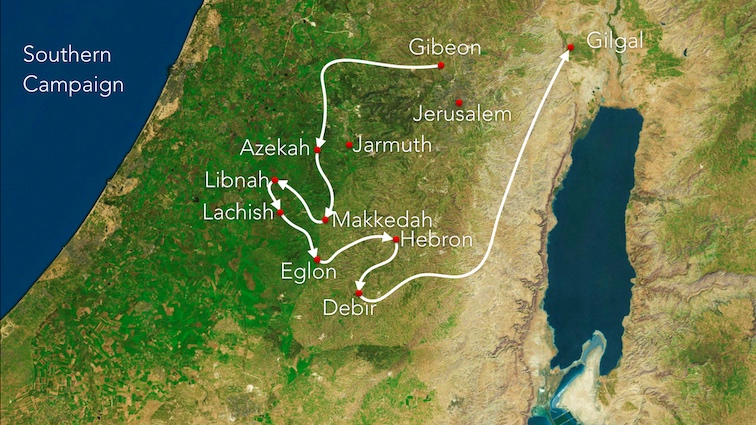
The Northern Campaign recorded in Joshua 11 describes how Joshua defeated the northern coalition that had gathered at Merom to wipe out the Israelites. The result of this campaign was the complete conquest of northern Canaan.
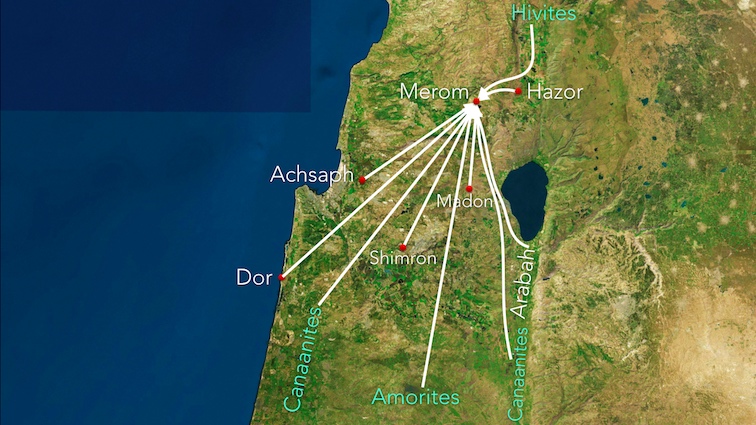
Read in isolation these chapters paint a picture of a lightning-quick, decisive, and complete victory over the Canaanites, not a single one of them being left alive. Here’s how the result of the Southern Campaign is described:
Jos 10:40–42 So Joshua defeated the whole land, the hill country and the Negeb and the lowland and the slopes, and all their kings; he left no one remaining, but utterly destroyed all that breathed, as the LORD God of Israel commanded… Joshua took all these kings and their land at one time, because the LORD God of Israel fought for Israel.1
The Northern Campaign is summarised like this:
Jos 11:23 So Joshua took the whole land, according to all that the LORD had spoken to Moses; and Joshua gave it for an inheritance to Israel according to their tribal allotments.
The archaeological search for the Israelite Conquest
Based on these sorts of passages Biblical Archaeologists in decades gone past put together what is known as the Conquest Model.2 Taking passages like these and others at face value they went digging for evidence of a large conquest all over Canaan and Transjordan. They had what looked like some initial success. In his book, “Biblical Archaeology”, Wright wrote the following:
The manifold evidence for the terrific destruction suffered by the cities of Bethel, Lachish, Eglon, Debir, and Hazor during the 13th century certainly suggests that a planned campaign such as that depicted in Josh 10-11 was carried out… We may safely conclude that during the 13th century a portion at least of the later nation of Israel gained entrance to Palestine by a carefully planned invasion, the purpose of which was not primarily loot but land.3
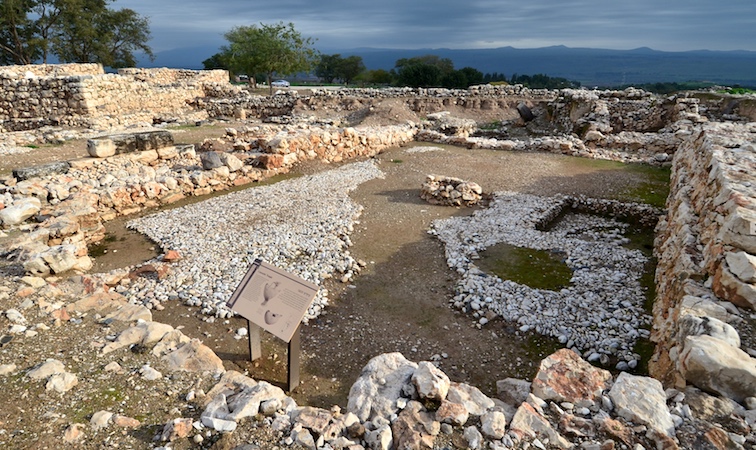
However, it didn’t take long before other archaeologists realised something was wrong. As more and more digging took place it became abundantly clear that, archaeologically speaking, the conquest described in Joshua 10 and 11 never happened.
Though some sites matched what biblical archaeologists expected to find (e.g. Bethel and Hazor), most of the other sites brought to light some disturbing problems. Some produced no evidence of a change of population or culture, while many others didn’t even exist at the time they were said to have been conquered (e.g. Heshbon, Debir).4
William Dever, one of the experts in this area, summarises the findings to date like this:
…the external material evidence supports almost nothing of the biblical account of a large-scale, concerted Israelite military invasion of Canaan, either that of Numbers east of the Jordan, or of Joshua west of the Jordan.5
Dever isn’t alone in saying this; it is a well established fact. Here’s what Blenkinsopp has to say:
…the thesis of a united conquest, confidently propounded by W. F. Albright, G. E. Wright, and others has been widely abandoned, largely as a result of more sophisticated methods, including regional surveys.6
And, contrary to what some Christian fundamentalists claim, there isn’t some grand atheist ‘conspiracy to disprove the Bible because they want to live sinful lives’. It just happens to be the case that there is practically no archaeological evidence for what we read in Joshua 10 and 11; in fact, the opposite is true: there is a veritable mountain of evidence showing that the conquests described in our chapters never happened.
So, now that we’re aware that Joshua 10 and 11 don’t match the archaeological record, how do we react?7
Joshua 10 and 11 in their wider context
Before either consigning these chapters to the dustbin or pretending the evidence doesn’t exist, it’s worth zooming out and taking a look at the wider context. Joshua 10 and 11 fit into a wider scriptural theme of the arrival into and settlement of Canaan by the Israelites – we should see how they fit into the rest of the relevant biblical literature.
A careful reader will note that it’s not just the archaeological evidence that these chapters are out of step with. It turns out that Joshua 10 and 11 don’t match what we read in the book of Judges, nor does it line up with we find in other parts of Joshua. Let’s take a look.
The rest of Joshua
As we’ve already seen, Joshua 10 and 11 describe a complete conquest of Canaan. The result of the Northern Campaign was that Joshua had taken the whole land, and that the land now enjoyed peace:
Jos 11:23 So Joshua took the whole land, according to all that the LORD had spoken to Moses; and Joshua gave it for an inheritance to Israel according to their tribal allotments. And the land had rest from war.
It’s therefore strange that a couple of chapters later we find God speaking to Joshua toward the end of his life saying:
Jos 13:1 Now Joshua was old and advanced in years; and the LORD said to him, “You are old and advanced in years, and very much of the land still remains to be possessed.
Hadn’t Joshua taken the whole land in chapter 10 and 11? If that was the case, why does very much of the land… remain to be possessed? The next few verses describe the land that still had to be conquered. If you look on a map you’ll see that it’s not that Joshua had missed a couple of small villages; what’s described is a significant area of land. This doesn’t seem to add up with what we read in 10 & 11.
What’s more, in Joshua’s final speech to all Israel, their elders and heads, their judges and officers he tells them:
Jos 23:6–7 Therefore be very steadfast to observe and do all that is written in the book of the law of Moses, turning aside from it neither to the right nor to the left, so that you may not be mixed with these nations left here among you, or make mention of the names of their gods…
Who are “these nations left here among you” if in chapter 10 we read:
Jos 10:40 So Joshua defeated the whole land, the hill country and the Negeb and the lowland and the slopes, and all their kings; he left no one remaining, but utterly destroyed all that breathed, as the LORD God of Israel commanded.
…and in chapter 11 we read:
Jos 11:20 For it was the LORD’s doing to harden their hearts so that they would come against Israel in battle, in order that they might be utterly destroyed, and might receive no mercy, but be exterminated, just as the LORD had commanded Moses. If “none were left remaining” and everyone was “exterminated”, who are the people left among the Israelites? This isn’t adding up…
It’s not just the rest of Joshua that chapters 10 and 11 don’t line up with, it’s Judges too.
The failed conquest in Judges
We find more detail about just who survived the Israelite “conquest”:
Jdg 3:3–5 …the five lords of the Philistines, and all the Canaanites, and the Sidonians, and the Hivites who lived on Mount Lebanon, from Mount Baal-hermon as far as Lebo-hamath… So the Israelites lived among the Canaanites, the Hittites, the Amorites, the Perizzites, the Hivites, and the Jebusite…
Loads of them. We find a similar list when we read who Solomon used as slave labour:
1 Ki 9:20–21 All the people who were left of the Amorites, the Hittites, the Perizzites, the Hivites, and the Jebusites, who were not of the people of Israel— their descendants who were still left in the land, whom the Israelites were unable to destroy completely—these Solomon conscripted for slave labor, and so they are to this day.
But, back in Judges again, what’s interesting is not so much that there were loads of indigenous Canaanites left, it’s that it was apparently God’s intention the whole time that there’d be significant numbers of survivors:
Jdg 3:1–6 Now these are the nations that the LORD left to test all those in Israel who had no experience of any war in Canaan (it was only that successive generations of Israelites might know war, to teach those who had no experience of it before)
One of the most interesting verses when it comes to trying to line up Joshua 10-11 with Judges is this:
Jdg 1:1 After the death of Joshua, the Israelites inquired of the LORD, “Who shall go up first for us against the Canaanites, to fight against them?”
Read that again… After Joshua died, that’s when the Israelites started wondering about who would lead them in the fight with the Canaanites. If taken at face value, this verse seems to indicate that Joshua hadn’t actually started any conquest – they only began the process once he’d died!
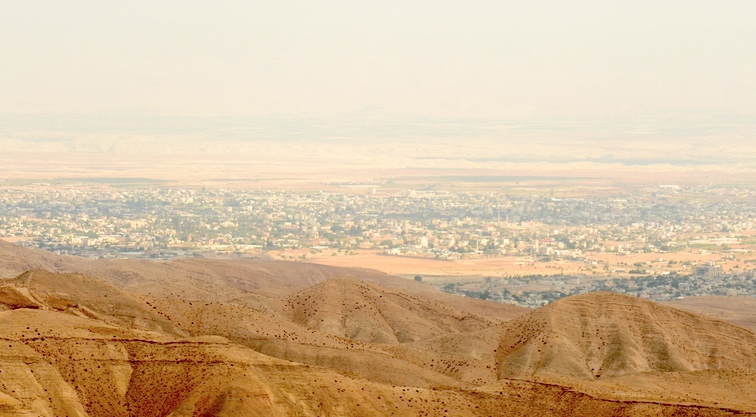
Clearly, there’s more to Joshua 10 and 11 than meets the eye. Those chapters talk about a complete conquest of Canaan, but the rest of Joshua and Judges paint the opposite picture – there were survivors, and plenty of them in large territories that the Israelites still had to conquer.
So far we’ve only seen inconsistencies at the larger scale. What about some of the specifics?
Hebron flogged like a dead horse
When was Hebron taken? It’s mentioned first in the Southern Campaign:
Jos 10:36–37 Then Joshua went up with all Israel from Eglon to Hebron; they assaulted it, and took it, and struck it with the edge of the sword, and its king and its towns, and every person in it; he left no one remaining, just as he had done to Eglon, and utterly destroyed it with every person in it.
Based on that the only sound we’d expect to hear in Hebron is crickets – every single person in it and the surrounding towns had been annihilated. How then do we explain this passage in the record of the Northern Campaign?
Jos 11:21 At that time Joshua came and wiped out the Anakim from the hill country, from Hebron, from Debir, from Anab, and from all the hill country of Judah, and from all the hill country of Israel…
What’s the deal? Had the Anakim crept into Hebron (and all the hill country of Judah) while Joshua was campaigning up north? If you want to try to resolve these two accounts and make them one, don’t forget to add this one to the mix:
Jos 15:13–14 According to the commandment of the LORD to Joshua, he gave to Caleb son of Jephunneh a portion among the people of Judah, Kiriath-arba, that is, Hebron (Arba was the father of Anak). And Caleb drove out from there the three sons of Anak: Sheshai, Ahiman, and Talmai, the descendants of Anak.
Oh, and this one too:
Jdg 1:10 Judah went against the Canaanites who lived in Hebron (the name of Hebron was formerly Kiriath-arba); and they defeated Sheshai and Ahiman and Talmai.
Also:
Jos 14:6–15 Then the people of Judah came to Joshua at Gilgal; and Caleb son of Jephunneh the Kenizzite said to him, “You know what the LORD said to Moses the man of God in Kadesh-barnea concerning you and me… So now give me this hill country of which the LORD spoke on that day; for you heard on that day how the Anakim were there, with great fortified cities; it may be that the LORD will be with me, and I shall drive them out, as the LORD said.” Then Joshua blessed him, and gave Hebron to Caleb son of Jephunneh for an inheritance. So Hebron became the inheritance of Caleb son of Jephunneh the Kenizzite to this day, because he wholeheartedly followed the LORD, the God of Israel. Now the name of Hebron formerly was Kiriath-arba; this Arba was the greatest man among the Anakim. And the land had rest from war.
We’re not getting a straight story on the conquest of Hebron. Things don’t seem to be lining up.

Let’s look at one more example…
Debir defeated
Here’s what happened to Debir on the Southern Campaign:
Jos 10:38–39 Then Joshua, with all Israel, turned back to Debir and assaulted it, and he took it with its king and all its towns; they struck them with the edge of the sword, and utterly destroyed every person in it; he left no one remaining…
Again, the population of Debir and its surrounding towns was annihilated by Joshua and all Israel. What do we read in Judges? Something quite different:
Jdg 1:8–13 Then the people of Judah fought against Jerusalem and took it. They put it to the sword and set the city on fire… From there they went against the inhabitants of Debir (the name of Debir was formerly Kiriath-sepher). Then Caleb said, “Whoever attacks Kiriath-sepher and takes it, I will give him my daughter Achsah as wife.” And Othniel son of Kenaz, Caleb’s younger brother, took it; and he gave him his daughter Achsah as wife.
This time Debir wasn’t taken by Joshua and all Israel, but by Caleb and the tribe of Judah. So much for the individual cities mentioned in the Southern and Northern Campaigns.
How about the end result of the campaigns?
The Israelites in the Judges period
As we’ve already seen, the end result of Joshua’s Northern and Southern Campaigns was that all of Canaan had been conquered. However, that’s not what we find in Judges, nor is it what we find in Samuel:
Jdg 1:19 The LORD was with Judah, and he took possession of the hill country, but could not drive out the inhabitants of the plain, because they had chariots of iron.
Jdg 1:34 The Amorites pressed the Danites back into the hill country; they did not allow them to come down to the plain.
Jdg 6:2 The hand of Midian prevailed over Israel; and because of Midian the Israelites provided for themselves hiding places in the mountains, caves and strongholds.
1 Sa 13:19–20 Now there was no smith to be found throughout all the land of Israel; for the Philistines said, “The Hebrews must not make swords or spears for themselves”; so all the Israelites went down to the Philistines to sharpen their plowshares, mattocks, axes, or sickles…
These are not the sorts of things we’d expect to read had the events of Joshua 10 and 11 actually happened. Instead of the land having rest from war, we find the Israelites described as having to “provide for themselves hiding places in the mountains, caves and strongholds.” (Jdg 6:2)
The problem to solve
We began by noting that the archaeological evidence doesn’t support the record of Joshua’s conquest in chapters 10 and 11, instead it is against a face value reading of the chapters. We then had a look at the wider context and found that those two chapters don’t agree with what we read elsewhere in Joshua, Judges or Samuel. It’s almost as if there are two completely contradictory stories about how the Israelites conquered the land.
Before we work out what to do with the archaeological evidence, we first need to work out what to do with the text. Having looked at their surrounding passages, we’re going go back to Joshua 10 and 11, look at them in more detail, and try to understand what they’re about.
Featured image
A photo of the southern end of the excavations at Jericho, taken from the cable car.
Footnotes
-
All scripture quotations unless otherwise noted are from the New Revised Standard Version (Nashville: Thomas Nelson Publishers, 1989) ↩
-
The three names most closely associated with the Conquest Model are W.F. Albright and his two students, G.E. Wright and J. Bright. ↩
-
G. Ernest Wright, Biblical Archaeology (Redwood Burn, 1974), 84. ↩
-
Israel Finkelstein and Neil Asher Silberman, The Bible Unearthed (Free Press, 2001), 81–83. ↩
-
William G. Dever, Who Were the Early Israelites and Where Did They Come From? (Grand Rapids, MI; Cambridge, U.K.: William B. Eerdmans Publishing Company, 2006), 71. ↩
-
Joseph Blenkinsopp, The Pentateuch: An Introduction to the First Five Books of the Bible (The Anchor Bible reference library; New Haven; London: Yale University Press, 1992), 175. ↩
-
If your response is to say that the Exodus took place in 1446 BCE so archaeologists are looking in the wrong place then you should read this. ↩
